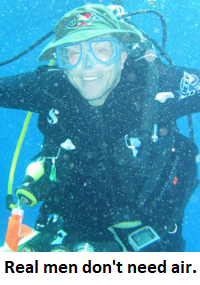Chapter 13 Marketing Defense
Julius Pierpont, the marketing director for General Dynamics’ Office of Military Systems, peered sternly at Mark Lehrner through ponderous horn-rimmed glasses. Engineers were such wretched nuisances. They never understood marketing. He sometimes wondered why the corporation didn’t do away with them. It would facilitate business.
“Listen, Julius,” Lehrner was saying with an air of strained patience, “There aren’t any invisible airplanes, got it?”
“Aren’t any?” Julius Pierpont frowned.
“None. Zip. Zero. Now I don’t want to get over your head with technical details, but I think I can convey the essential point. Listen carefully. You can’t detect what isn’t there. It’s a principle of engineering. See? No can do. No plane, no detect. Sorry.”
Julius Pierpont’s full lips twitched beneath the looming rims of his glasses, making him look like a swarthy and agitated rabbit. The Pentagon was offering three hundred million green ones for an operational invisible-airplane detector, with the possibility of an unlimited production run for the NATO allies. In fact the Department of Defense had suddenly wakened to a new danger: No invisible airplanes had been detected in Europe, showing that even the sophisticated early warning radars of the Alliance were being fooled.
While America had been sleeping, the Russians had stolen a technological march on the free world. In addition to the Invisible Airplane Gap, there seemed to be a Radar Gap also, and the Pentagon was frantic to acquire equipment to overcome the disadvantage. Such a demanding project could easily run into billions of dollars, especially with the help of General Dynamics’ accounting department. And Lehrner was interposing trifling objections.
“I don’t understand. Can’t you just make a more powerful detector? For $300 million, it should be possible to detect anything. Whether it’s there or not.”
Lehrner was almost jiggling with frustration. “But you don’t understand. These alleged invisible airplanes aren’t there.” Lehrner stared a Pierpont with the expression of a man who has just realized that he is talking to a tape recording.
“Ah! I see. Then where are they? We need to make something to find them, and then detect them. Of course, the added capability will add to development costs, heh, hmmm. How long should that take?”
Dick Potter interposed from within the serenity of his pink sphericity, “Three months. Easy.”
Pierpont perked up like a beaver discovering water after a long stretch of desert. “Wonderful! I knew realism would at last come to the fore. Excellent. I’ll prepare an announcement.” And he hurried out the door.
Lehrner turned to stare at Potter with the expression of a man who has recently been poisoned. Potter smiled as seraphically as Buddha after two martinis.
“Dick, have you lost your alleged mind? That horn-rimmed slime mold is committing us to …committing…I can’t think about it.”
“Yes. So we design it.”
“How do you detect what isn’t there?”
“Amplify.”
“What?”
“Listen to me, Mark. We throw something together, you know, a little bit of IR, some stuff from Radio Shack, lots of knobs and blinking lights. Ok? Then we pass it off to some junior guy for full-scale development. It won’t work, so we say it needs to be more sensitive. Then we get lots of money to work on really nice high-end IR spectrophotometers. That’s where the action is, not in this radar altimetry we’re doing. And of course it won’t hurt us to be design leaders on a $300 million project.”
“I can’t believe we’re doing this.”
“Wait a few years.”
